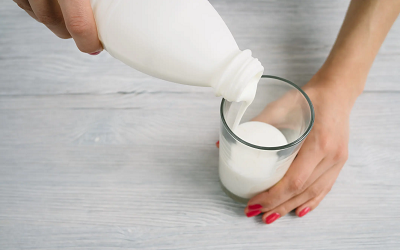The U.S. Department of Agriculture’s latest proposal would ban flavouring milk in school cafeterias.
In order to “reduce children’s risk of chronic disease,” the agency published a request for comments in February on its plan to change long-term school nutrition guidelines, which calls for fewer added sugars in school breakfast and lunch programmes.
The technique would “reduce exposure to added sugars and would promote the more nutrient-dense choice of unflavoured milk for young children when their tastes are developing,” according to the suggestion.
More precisely, the USDA advises reducing strawberry and chocolate milk in high schools and completely banning them in primary and secondary institutions.
More than 92,000 comments on the plan have been sent to the USDA as of the time of publishing, representing views on both sides of the issue.
While some comments praised the initiative and expressed support for tightening nutrition requirements in schools, others denounced the idea and said that each family’s nutritional choices should be allowed to its own discretion.
According to Cindy Long, administrator of the USDA’s Food and Nutrition Service, “flavoured milk is a challenging issue to figure out exactly the best path forward,” she addressed media recently.
We genuinely want to promote milk drinking among kids, but we also understand the need to limit added sugar intake, she added.

USA’s Milk Processors & Dairy Sector Pledge to Cut Back on Added Sugars
The International Dairy Foods Association launched a “Healthy School Milk Commitment” last month on behalf of American milk processors, promising to give public schools milk with less added sugar.
According to the group, dairy businesses would “deliver milk’s 13 essential nutrients to America’s students while reducing calories and added sugars in flavoured milk.”
For the 2025–2026 academic year, 37 school milk processors—who together account for more than 90% of the nation’s school milk volume—will abide by their promise.
The milk choices would have “no more than 10 grammes of added sugar per 8 fluid ounce serving, fully consistent with the latest federal Dietary Guidelines for Americans and ahead of current school meal nutrition guidelines established by the U.S. Department of Agriculture (USDA).”
Today’s school-provided flavoured milk products, such chocolate milk, only have an average of 8.2 grams of added sugar per serving. In a statement, the organisation claimed that the Healthy School Milk Commitment “combines dairy’s drive for product innovation with a long-standing dedication to deliver healthy, nutritious dairy solutions to schoolchildren everywhere.
What comes next?
The public comment period, which was extended from April to May 10, 2023, has officially finished.
The USDA stated that it hopes to release a final regulation in time for schools to plan for the 2024-25 school year.


